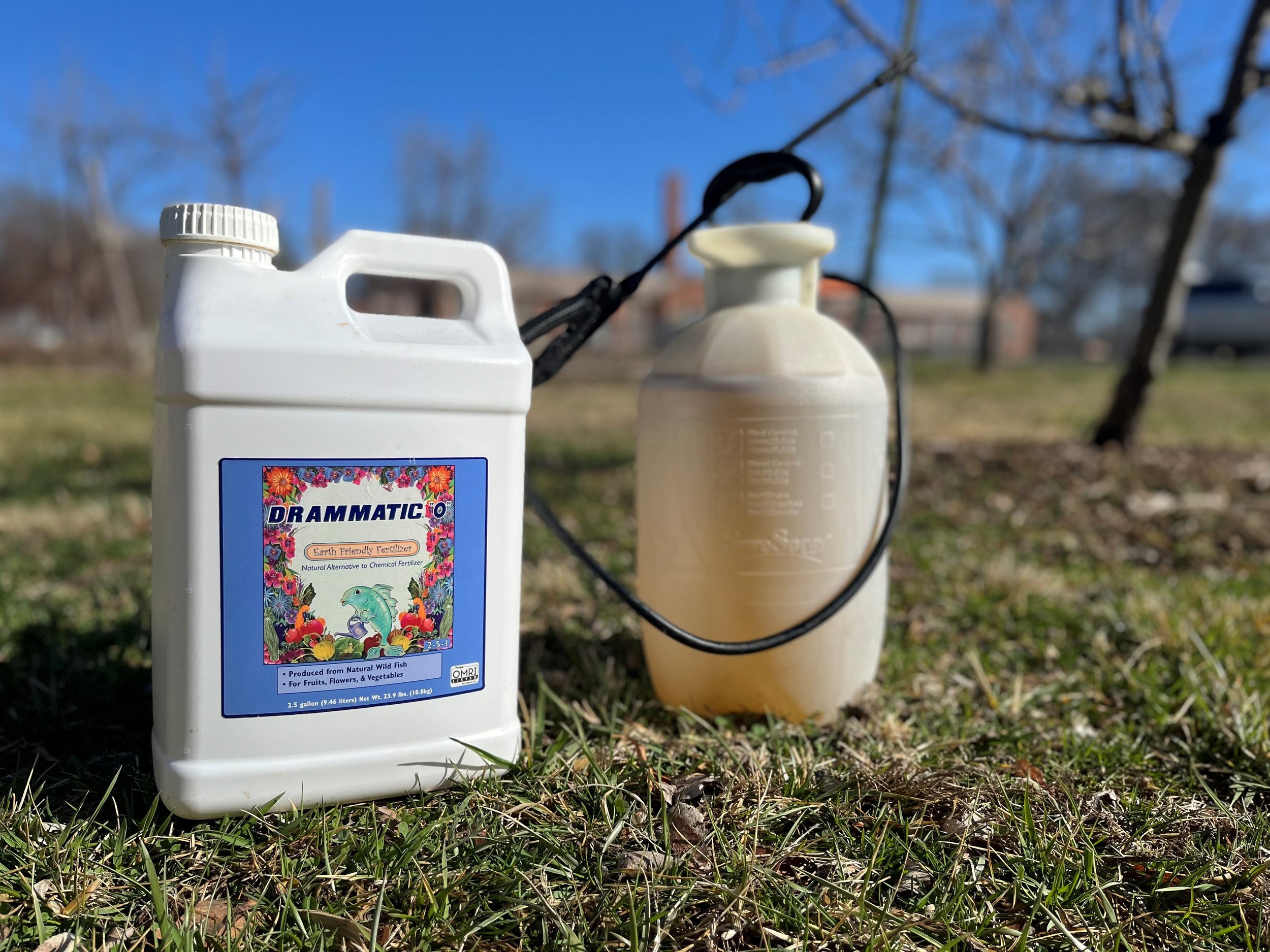Home>Gardening Basics>Understanding Soil>What Does Gypsum Do For Soil


Understanding Soil
What Does Gypsum Do For Soil
Published: February 12, 2024
Learn how gypsum benefits soil and its role in improving soil structure and nutrient availability. Understand the impact of gypsum on soil health and fertility. Discover the importance of gypsum for sustainable soil management.
(Many of the links in this article redirect to a specific reviewed product. Your purchase of these products through affiliate links helps to generate commission for Chicagolandgardening.com, at no extra cost. Learn more)
Table of Contents
Introduction
Introduction
Welcome to the fascinating world beneath our feet, where the health of the soil plays a crucial role in the success of agriculture and the vitality of our planet. In this article, we will delve into the remarkable properties of gypsum and its impact on soil quality. Understanding the role of gypsum in soil management is essential for farmers, gardeners, and environmental enthusiasts alike.
Soil serves as the foundation for the growth of plants, providing crucial nutrients and support for their roots. However, various factors can compromise the health and structure of soil, leading to suboptimal conditions for plant growth. This is where gypsum, a naturally occurring mineral, emerges as a valuable ally in soil improvement and sustainable land management.
Throughout history, gypsum has been revered for its ability to enhance soil structure, mitigate certain types of soil compaction, and promote healthy root development. By exploring the multifaceted benefits of gypsum for soil, we can gain a deeper appreciation for this mineral’s pivotal role in fostering fertile and resilient landscapes. Let’s embark on a journey to uncover the secrets of gypsum and its profound impact on soil health and agricultural productivity.
What is Gypsum?
Gypsum, a naturally occurring mineral, is a crystalline form of calcium sulfate dihydrate (CaSO4·2H2O). This soft and abundant mineral is formed through the evaporation of ancient seas and lakes, leaving behind deposits that can be mined for various applications. Gypsum is renowned for its versatility and is utilized in a myriad of industries, including construction, agriculture, and medicine.
In its natural state, gypsum often appears as translucent to opaque crystals, exhibiting hues ranging from white and colorless to shades of pink, yellow, and brown. Its distinctive appearance and physical properties make gypsum easily distinguishable from other minerals, contributing to its widespread use and recognition.
One of gypsum's most notable characteristics is its solubility in water, which allows it to be readily absorbed by soil and plants. This solubility plays a pivotal role in the mineral's effectiveness in soil improvement and agricultural applications. Additionally, gypsum is non-toxic and safe for both the environment and human health, making it a desirable choice for sustainable soil management practices.
Gypsum's chemical composition and physical attributes make it an invaluable resource for addressing soil-related challenges and promoting optimal growing conditions for crops and vegetation. Its unique properties enable it to interact with soil components in a manner that enhances soil structure, aeration, and water retention. As we continue our exploration, we will uncover the remarkable ways in which gypsum influences soil dynamics and fosters a fertile environment for plant growth.
Role of Gypsum in Soil
Gypsum plays a pivotal role in soil management by exerting a range of beneficial effects on soil structure, composition, and fertility. When applied to soil, gypsum interacts with its components in ways that promote optimal conditions for plant growth and environmental sustainability. Understanding the diverse roles of gypsum in soil dynamics is essential for harnessing its potential in agricultural and land management practices.
One of gypsum’s primary functions in soil is its ability to improve soil structure. In many cases, soil can become compacted, limiting root growth and water infiltration. Gypsum works to counteract this compaction by promoting flocculation, a process in which soil particles aggregate into small, crumb-like clusters. This enhances soil porosity and reduces bulk density, allowing roots to penetrate the soil more easily and facilitating the movement of air and water within the soil profile.
Furthermore, gypsum plays a crucial role in addressing sodic soils, which are characterized by high levels of sodium that can detrimentally impact soil structure and plant growth. The application of gypsum helps to displace exchangeable sodium ions from the soil colloids, thereby ameliorating the harmful effects of sodicity. This process, known as leaching, promotes the reclamation of sodic soils and restores their productivity.
Another significant contribution of gypsum to soil health is its influence on nutrient availability and uptake. By enhancing soil structure and reducing compaction, gypsum facilitates the movement of essential nutrients within the soil, making them more accessible to plant roots. Additionally, gypsum’s calcium content contributes to the maintenance of a favorable calcium-to-magnesium ratio in the soil, which is crucial for optimal plant nutrition and overall soil fertility.
As we unravel the multifaceted role of gypsum in soil, it becomes evident that this mineral serves as a versatile ally in addressing soil-related challenges and fostering a conducive environment for plant growth. From mitigating compaction to enhancing nutrient availability, gypsum’s impact on soil dynamics is instrumental in promoting sustainable and productive agricultural landscapes.
Benefits of Gypsum for Soil
The application of gypsum offers an array of compelling benefits for soil, encompassing improvements in soil structure, nutrient availability, and overall fertility. As a versatile soil amendment, gypsum contributes to the creation of favorable conditions for plant growth and environmental sustainability. By harnessing the diverse benefits of gypsum, farmers and land managers can optimize soil health and enhance agricultural productivity.
One of the primary benefits of gypsum for soil is its role in enhancing soil structure. Gypsum promotes the formation of stable soil aggregates, leading to improved soil porosity, aeration, and water infiltration. This, in turn, facilitates root development and enhances the resilience of soil against compaction, ultimately contributing to healthier and more productive growing environments.
Furthermore, gypsum plays a crucial role in addressing sodic soils, which are characterized by high levels of exchangeable sodium that can compromise soil structure and impede plant growth. The application of gypsum effectively mitigates the detrimental effects of sodicity by displacing exchangeable sodium ions and promoting the reclamation of sodic soils, thereby restoring their productivity and enabling sustainable land use.
In addition to its impact on soil structure, gypsum significantly influences nutrient availability and uptake in the soil-plant system. By reducing soil compaction and enhancing soil aeration, gypsum facilitates the movement of essential nutrients within the soil, making them more accessible to plant roots. Furthermore, gypsum’s calcium content contributes to the maintenance of a balanced calcium-to-magnesium ratio in the soil, which is essential for optimal plant nutrition and overall soil fertility.
Another notable benefit of gypsum for soil is its capacity to mitigate the harmful effects of aluminum toxicity in acidic soils. Gypsum interacts with aluminum in the soil, reducing its toxicity and promoting a more favorable environment for plant root development. This mechanism enhances the resilience of plants against aluminum stress and contributes to the sustainable management of acidic soils.
By harnessing the myriad benefits of gypsum for soil, agricultural practitioners and environmental stewards can cultivate fertile, resilient landscapes that support thriving plant growth and sustainable land use. From improving soil structure to enhancing nutrient availability, gypsum stands as a valuable ally in promoting soil health and agricultural sustainability.
Application of Gypsum in Agriculture
The application of gypsum in agriculture encompasses a range of strategic uses that contribute to the enhancement of soil quality, the promotion of sustainable land management, and the optimization of crop productivity. By integrating gypsum into agricultural practices, farmers and land managers can harness its diverse benefits to address soil-related challenges and foster fertile growing environments.
One of the primary applications of gypsum in agriculture is its use as a soil amendment to improve soil structure and mitigate compaction. Gypsum is applied to soil to promote flocculation, a process in which soil particles aggregate into small, crumb-like clusters, enhancing soil porosity and reducing bulk density. This facilitates root penetration, improves water infiltration, and enhances the overall resilience of the soil against compaction, laying the foundation for healthy and productive growing conditions.
Furthermore, gypsum serves as a valuable tool for reclaiming sodic soils, where high levels of exchangeable sodium can compromise soil structure and impede plant growth. The application of gypsum effectively displaces exchangeable sodium ions, mitigating sodicity and promoting the restoration of sodic soils to productive and sustainable states. This reclamation process enables the revitalization of previously unusable land, expanding opportunities for agricultural cultivation and environmental stewardship.
In addition to its role in soil improvement, gypsum contributes to the sustainable management of acidic soils by mitigating aluminum toxicity. In acidic soils, aluminum toxicity can hinder root development and impede plant growth. The application of gypsum interacts with aluminum, reducing its toxicity and creating a more favorable environment for plant roots. This mechanism enhances the resilience of plants against aluminum stress, contributing to the sustainable cultivation of acidic soil environments.
Moreover, the application of gypsum in agriculture extends to its role in enhancing nutrient availability and uptake in the soil-plant system. By improving soil structure and reducing compaction, gypsum facilitates the movement of essential nutrients within the soil, making them more accessible to plant roots. Additionally, gypsum’s calcium content contributes to the maintenance of a balanced calcium-to-magnesium ratio in the soil, which is crucial for optimal plant nutrition and overall soil fertility.
By integrating gypsum into agricultural practices, farmers and land managers can harness its diverse benefits to optimize soil health, promote sustainable land use, and enhance crop productivity. From soil improvement to sodic soil reclamation and nutrient enhancement, the strategic application of gypsum underscores its pivotal role in fostering fertile and resilient agricultural landscapes.
Conclusion
As we conclude our exploration of gypsum’s profound impact on soil health and agricultural sustainability, it becomes evident that this versatile mineral stands as a cornerstone of soil management and land stewardship. From its role in enhancing soil structure and mitigating compaction to its contributions to nutrient availability and sodic soil reclamation, gypsum emerges as a multifaceted ally in fostering fertile and resilient growing environments.
The application of gypsum in agriculture represents a strategic approach to addressing soil-related challenges and promoting sustainable land management practices. By leveraging the diverse benefits of gypsum, farmers and land managers can optimize soil health, enhance crop productivity, and contribute to the long-term vitality of agricultural landscapes.
Furthermore, the environmentally friendly nature of gypsum underscores its appeal as a safe and effective soil amendment, aligning with the principles of sustainable agriculture and ecological stewardship. Its non-toxic properties and natural origin position gypsum as a valuable resource for fostering healthy and productive growing environments while minimizing environmental impact.
As we look to the future of agriculture and soil management, the integration of gypsum into agricultural practices holds promise for addressing emerging challenges such as soil compaction, sodicity, and nutrient management. By continuing to explore innovative applications and best practices for gypsum utilization, agricultural practitioners can unlock its full potential in fostering resilient and sustainable agricultural landscapes.
In essence, gypsum’s significance in soil management extends beyond its physical properties; it embodies a commitment to nurturing the vitality of the land and fostering the growth of future generations. Through the strategic application of gypsum, we can cultivate landscapes that not only sustain abundant harvests but also preserve the intrinsic beauty and resilience of the natural world.
As we embrace the evolving dynamics of agriculture and environmental stewardship, let us recognize gypsum as a steadfast ally in our pursuit of sustainable, productive, and thriving landscapes.






